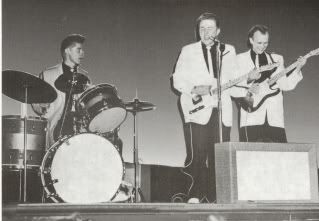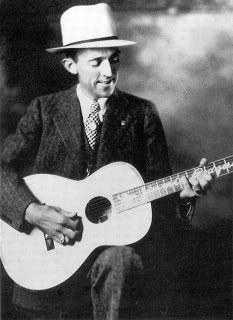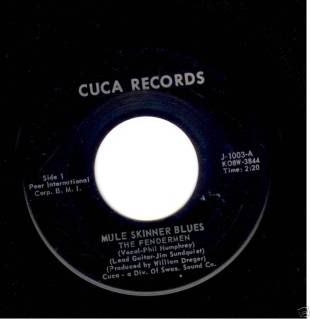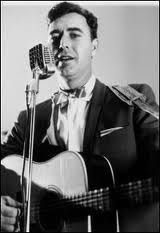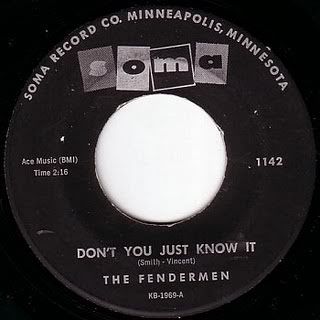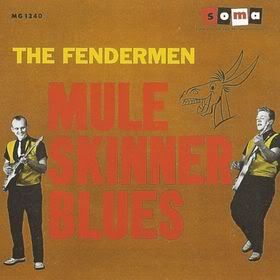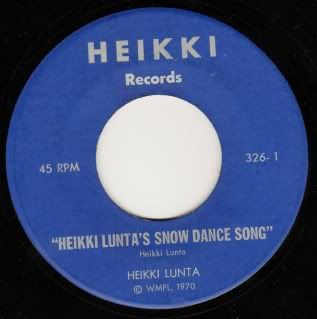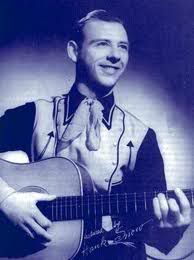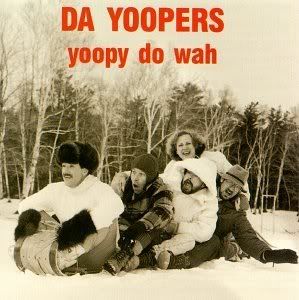
The Packers' "official music" CD opens with "G-Force"
as heard at Lambeau Field.
BY STEVE SEYMOUR
The Green Bay Packers' antics on the football field have inspired millions of fans and resulted in a growing number of novelty songs, including one from the Upper Peninsula.
Musical salutes to the three-time Super Bowl champions can be traced back to 1931 when the Packers' fight song emerged.
Milwaukee-based commercial jingle writer Eric Karll composed the song which he titled "Go! You Packers! Go!"
The fight song, the first for an American professional football team, debuted at a Packers game in 1931 with a performance by the marching Lumberjack Band.
A version of the song recorded in 1992 is played at Lambeau Field during the introduction of the team and when the Packers score an extra point.
If don't know the tune, the lyrics refer to the team as "fighting fools" and urge them to "bring the bacon home to old Green Bay."
Formed in 1921, the Lumberjack Band even traveled to away games, notably those against the Chicago Bears.
The group became known as the Green Bay Packer Band during the Vince Lombardi's time as head coach.
During that time the Packers were also saluted in "Skidoo," a 1968 movie directed by Otto Preminger.
The soundtrack included "The Green Bay Packers March," written and performed by Harry Nilsson, who would have his first hit a year later with "Everybody's Talkin'."
Starring Jackie Gleason and Carol Channing, the comedy flopped, so few people heard Nilsson's tune.
Most but not all novelty songs about the Packers have been issued since their last Super Bowl victory.
In 1993, football fan Edward J. Lemberger composed and recorded "I Love My Green Bay Packers! (The Packer Polka)."
The song was issued under Lemberger's stage name, Eddy J. He send the tape to various Wisconsin area radio and television stations.
Then, Lemberger found himself singing the tune at tailgate parties as the Packers began winning games on a regular basis with new quarterback Brett Favre.
That exposure lead to Lemberger joining Packer Fan Tours as an entertainer for a number of years.
Lemberger's song includes the memorable lines: "We take our opposition and crunch 'em like they're crackers. That's why I love my Green Bay Packers."
That song and other novelty songs are included on Lemberger's CD, "Eddy J.'s Greatest Packers Hits, Plus."
Madison-based band the Wizenhiemers, meanwhile, gained notoriety for their "Go You Packers Go." Although carrying the same title as the Packers fight song, this is a different number. The tune became popular in the months prior to the Packers' third Super Bowl win in 1996 and is reminiscent of the hard rock sound of the time.
One of the most prolific Packer-tribute bands was Cheeseheads With Attitude, also known as C W A. This Oshkosh, Wis.-based trio issued three 6-song compact discs in 1996, 1997 and 1998.
Emulating rappers of the time, CWA comprised Oshkosh's "St. Evie" and Milwaukee natives "Super J" and "Foolio."
All three discs, "Straight Out of Wisconsin," "Cheeseheads for Life" and "Say Cheese," appeared on the Cheezee Records label.
Their first disc opened with the original "Wedge of Allegiance," but also included their lyrics put to songs by the likes of Tone Loc and the Beastie Boys.
"Cheeseheads for Life," meanwhile featured the group's own tune, "The Tundra Cheer" as well as Packers-inspired adaptations of "YMCA" by the Village People, "Turning Japanese" by the Vapors and "Three Little Pigs" from Green Jello.
Their final disc boasted the original compositions "I Love Eating Cheese" and "Packer Bar Song" and parody lyrics for Joan Jett's "I Love Rock 'N Roll."
Even the Packers got into the musical action.
Wide receiver Robert Brooks perfected the Lambeau Leap, and turned it into a song.
The celebratory leap is immortalized in the song "Jump" which Brooks issued on his own label, Shoo In 4 Life Records, Inc.
Released in 1996, the song was written, arranged, produced and performed by the football star.
The song, which mentions then-current Packers LeRoy Butler, Reggie White and Brett Favre, as well as team legends Bart Starr and Don Hudson, explains how the "Lambeau Leap" created a bond between the team and fans.
Today, you can purchase "The Official Music of the Green Bay Packers" compact disc at the team's Pro Shop in Green Bay. The CD comprises "G-Force," "Lambeau's Where the Party's At," "Runnin' With the Big Dogs," "Packers Tailgate," "Get Down," "Packin' the Heat," "G-Force Has the Guts," "Lambeau Leap," "Let's Go Green Bay," "One for the Tundra" and "Bring on the Heroes." The opening track was a hit single, according to a sticker on the album cover.
In 1985, Marquette's Bill Etten and the Heritage Band scored a big regional hit with "We Go Green Bay." The polka's chorus was especially catchy: "We go see Packers; we watch them play. When they score touchdown; we shout hooray."
Clocking in at just under three minutes, the tune was issued as a 7-inch 45 rpm single on Jack Pine Records.
Written by Etten, J. R. Labby and Ed Wales, "We Go Green Bay" was produced by Labby and Michael McKelvy at Studio 8 in Ishpeming.
Etten estimated 20,000 copies were sold in Yooperland and Packerland.
Actually, the Packers have been tied to the U. P. from the beginning.
Not only do thousands of Packers fans live in northern Michigan, but the Green Bay squad played six games against U. P. teams during the 1919 and 1920 seasons. The Packers played Stambaugh three times, Menominee twice and Ishpeming once, grabbing a victory in every contest. During the game at Ishpeming, Packers' players suffered broken bones on their first three running plays. With only 17 players remaining, Curly Lambeau decided to finish the game with only passes and punts, winning 33-0.
Growing up during the 1960s, the Packers were on every Sunday during football season, at home or at camp.
During the Bart Starr era, I was even lucky enough to attend a home game in Green Bay.
Of course the game was exciting, but I've aways loved a good Packer novelty song too.
###









